- Home
- Larry Niven
The Ringworld Engineers (ringworld) Page 12
The Ringworld Engineers (ringworld) Read online
Page 12
“Sure. We’d have to go out of the atmosphere with the fusion drive blazing like a star, but sure. Remember how we reached Halrloprillalar’s floating jail? Upside down in midair, with the motors burned out of our flycycles?”
Chmeee’s tail thumped the back of his chair. He remembered.
“We don’t want to be noticed by any old machinery. The superconductor plague doesn’t seem to have got it all.”
Grassland gave way to patterns of cultivation, then to a watery jungle. Vertical sunlight reflected back at them from between the trunks of flowering trees.
Louis was feeling wonderful. He wouldn’t let himself see the futility of his war on the sunflower patch. It had worked. He had set himself a task; he had accomplished it with intelligence and the tools at hand.
The swamp seemed to go on forever. Once Chmeee pointed out a small city. It was difficult to see, with water half drowning the buildings, and vines and trees trying to pull them down. The architectural style was strange. Every wall and roof and door bulged outward a little, leaving the streets narrow in the center. Not built by Halrloprillalar’s people.
By midday the lander had traveled further than Ginjerofer or the king giant would travel in their lifetimes. Louis had been foolish to question savages. They were as far from the floating city as any two points on Earth.
The Hindmost called.
Today his mane was a swirling rainbow, dyed in streamers of primary colors. Behind him puppeteers flickered along lines of stepping discs, clustered at shop windows, brushed against each other without apology or resentment, all in a murmur of music with flutes and clarinets predominating: puppeteer language. The Hindmost asked, “What have you learned?”
“Little,” said Chmeee. “We have wasted time. There was certainly a great solar flare seventeen falans ago—about three and a half years—but we guessed that much. The shadow squares closed to protect the surface. Their guidance system must operate independently of the Ringworld’s.”
“We could guess that too. No more?”
“Louis’s hypothetical Repair Center is certainly inactive. This swamp below us was not designed. I imagine a major river silted up to block the outflow of a sea. We find a variety of hominids, some intelligent, some not. Of those who built the Ringworld we find no trace, unless they were Halrloprillalar’s ancestors. I am inclined to think they were.”
Louis opened his mouth … and glanced down at a threshold pain in his leg. He found four kzinti claws just resting on his thigh. He shut his mouth. Chmeee continued, “We have not met any of Halrloprillalar’s species. Perhaps they were never a dense population. We hear rumors of another race, the Machine People, who may rise to replace them. We go to seek them.”
“The Repair Center is inactive, yes,” the Hindmost said briskly. “I have learned much. I have put a probe to work—”
“You have two probes,” Chmeee said. “Use both.”
“I hold one in reserve, to refuel Needle. With the other I have learned the secret of the spill mountains. See—”
The far right screen showed a probe’s-eye view. It raced along the rim wall; passed something, too quick for detail; slowed, turned, moved back.
“Louis advised me to explore the rim wall. The probe had barely started its deceleration routine when it found this. I thought it worth investigating!”
There was a swelling on the rim wall—a tube hooked over the lip. It was molded, flattened against the rim wall, and was made of the same translucent gray scrith. The probe eased toward it until the camera was looking up into a pipe a quarter-mile across.
“Much of the Ringworld’s design shows a brute-force approach,” the Hindmost was saying. And the probe moved alongside the pipe, over the lip, and down the outer face of the rim wall to where the pipe disappeared into the foamed material that formed a meteor shield for the Ringworld’s underside.
“I see,” Louis said. “And it wasn’t working?”
“No. I tried to trace the pipe and had some success.”
The scene jumped. Now it showed dark racing motion as the probe cruised a good distance outward from the Ringworld. Inverted landscape passed above, seen by infrared light. The probe slowed, stopped, moved upward.
If a meteor struck the Ringworld, it had to fall first from interstellar space; and it struck with that velocity plus the Ringworld’s own seven hundred and seventy miles per second. A meteor had struck here. The plasma cloud had drawn a savage gouge across hundreds of miles of sea bottom, vaporizing the protective foam. There in the gouge was a length of pipe a few hundred feet in diameter. It led up into the sea bottom.
“A recycling system,” Louis murmured.
The puppeteer said, “Without some counterbalance to erosion, the Ringworld’s topsoil would all be in the sea bottoms in a few thousand years. I expect the pipes ran from the sea bottoms along the underside and up over the rim wall. They deposit sea-bottom sludge on the spill mountains. Much of the water would boil away in the near vacuum at the peak, thirty miles high. The mountain gradually collapses under its own weight. Material moves from the rim walls inward, carried by winds and rivers.”
Chmeee said, “Mere supposition, but plausible. Hindmost, where is your probe now?”
“I intend to bring it out from under the Ringworld and reinsert it into the rim transport system.”
“Do that. Does the probe have deep-radar?”
“Yes, but the range is short.”
“Deep-radar the spill mountains. The spill mountains are … perhaps twenty to thirty thousand miles apart? Thus we may find on the order of fifty thousand spill mountains along both rim walls. A handful of those would make a fine hiding place for the Repair Center.”
“But why should the Repair Center be hidden?”
Chmeee made a rude noise. “What if the subject races should revolt? What of an invasion? Of course the Repair Center is hidden, and fortified too. Search every spill mountain.”
“Very well. I will scan the starboard rim wall in one Ringworld rotation.”
“Scan the other rim afterward.”
Louis said, “Keep the cameras going too. We’re still looking for attitude jets … though I’m starting to think they had something else going.”
The Hindmost clicked off. Louis turned to the window. It had been tickling at his attention all along: a pale thread that curved along the edge of the swamp, straighter than a river. Now he pointed out the barely visible pair of dots moving along its length. “I think we need a closer look at that. Why don’t you take us down?”
***
It was a road. From a hundred feet up it was rough-surfaced, stony stuff: white stone poured in a stream. Louis said, “The Machine People, I presume. Shall we track those vehicles?”
“Let us wait until we are closer to the floating city.”
Giving up a present opportunity seemed silly, but Louis was afraid to object. The kzin’s tension was thick enough to smell.
The road avoided the low, wet areas. It seemed in good repair. Chmeee followed it at low speed, a hundred feet up.
Once they passed a handful of buildings, the biggest of which seemed to be a chemical plant. Several times they watched boxy vehicles pass below them. They were seen only once. A box stopped suddenly, and humanoid shapes spilled out, ran in circles, then produced sticks which they pointed at the lander. A moment later they were out of sight.
There were great pale shapes in the wet jungle. They couldn’t be glacier-scoured boulders; not here. Louis wondered if they might be tremendous fungi. He stopped wondering when he saw one move. He tried to point it out to Chmeee. The kzin ignored him.
The road curved away to antispinward as it approached a range of craggy mountains; it jogged through a notch in the range, rather than carving its own path, then jogged right to run alongside the swamp again.
But Chmeee swerved left and accelerated. The lander streaked along the portward side of the range, trailing a plume of fire. Abruptly the kzin spun the lander around, braked,
and set down at the foot of a granite cliff.
He said, “Let us step outside.”
The scrith shell of the mountain would block the Hindmost’s microphones, but they’d feel still safer outside the lander. Louis followed the kzin.
The day was bright and sunny—too bright, as this arc of the Ringworld approached its nearest point to the sun. A stiff warm wind was blowing. The kzin asked, “Louis, were you about to tell the Hindmost of the Ringworld engineers?”
“Probably. Why not?”
“I assume we’ve come to the same conclusion.”
“Doubtful. What would a kzin know of Pak protectors?”
“I know everything in the records of the Smithsonian Institute, what little there is. I have studied the testimony of the asteroid belt miner, Jack Brennan, and holos of the mummified remains of the alien Phssthpok and of the cargo pod from his ship.”
“Chmeee, how did you get hold of that stuff?”
“Does it matter? I was a diplomat. The existence of the Pak has been a Patriarch’s Secret for generations, but any kzin who must deal with humans is required to study the records. We learn to know our enemy. I may know more of your ancestry than you do. And I surmise that the Ringworld was built by Pak.”
***
Six hundred years before Louis Wu’s birth, a Pak protector arrived in Sol system on a mission of mercy. It was through this Phssthpok, via the Belter Jack Brennan, that historians learned the rest of the story.
The Pak were native to a world in the galactic core. They lived their lives in three stages: child, breeder, protector. The adults or breeders were just intelligent enough to swing a club or throw a stone.
In middle age, if they lived long enough, Pak breeders developed a compulsion to gorge on the plant called tree-of-life. A symbiotic virus in the plant triggered the change. The breeder lost its gonads and teeth. Its skull and brain expanded. Lips and gums fused into a hard, blunt beak. Its skin wrinkled and thickened and hardened. Its joints became enlarged, offering a larger moment arm to the muscles, increasing their strength. A two-chambered heart developed in the groin.
Phssthpok came tracking a Pak colony ship that had reached Earth more than two million years earlier.
The Pak were in a constant state of war. Previous colonies to nearby worlds in the galactic core had always been overrun by subsequent waves of ships. Perhaps that was the reason this ship had come so far.
The colony was large and well-equipped, and guided by beings tougher and smarter than humans. It had failed nonetheless. Tree-of-life grew in Earth’s soil, but the virus didn’t. The protectors had died out, leaving a lost population of Pak breeders to fend for themselves … and leaving records of a cry for help that had crossed thirty thousand light-years to the Pak home world.
Phssthpok found those records in an ancient Pak library. And Phssthpok crossed thirty thousand light-years, all alone in a slower-than-light craft, seeking Sol system. The resources that built that craft, in knowledge and minds and materials, were resources Phssthpok had conquered and held by war. His cargo pod was jammed with tree-of-life roots and seeds, and bags of thallium oxide. His own research had discovered the need for that unusual soil additive.
It might have occurred to him that the breeders would mutate.
Among the Pak a mutant stood no chance. If the children smelled wrong to their protector forefathers, they were killed. On Earth—perhaps Phssthpok counted on a lower mutation rate, this far from the savage cosmic-ray density among the core suns. Perhaps he took his chances.
The breeders had mutated. By Phssthpok’s time they showed little resemblance to the Pak breeder—barring certain changes at middle age, when the production of eggs stopped in females, and when both sexes showed wrinkling of skin, lost teeth, swelling of joints, and a restlessness and dissatisfaction that was all that remained of the hunger for tree-of-life. Later in life, heart attacks would result from the lack of the second heart.
Phssthpok learned none of this. The rescuer died almost painlessly, with no more than a suspicion that those he intended to rescue had become monsters, and had no need of him at all.
Such was the tale that Jack Brennan told to United Nations representatives before his disappearance. But Phssthpok was dead by then, and Jack Brennan’s testimony was doubtful. He had eaten tree-of-life. He had become a monster; his braincase in particular was expanded and distorted. Perhaps he had become mad too.
***
It was as if a load of spinach noodles had been spilled all over this rocky area. Strips of greenery, fuzzy to the touch, hugged the ground in places where dirt had packed itself between the boulders. Clouds of insects buzzed around their ankles, staying within inches of the ground.
“Pak protectors,” said Louis. “That’s what I thought, but I’ve been having trouble making myself believe it.”
Chmeee said, “The vacuum suits and the Grass Giant’s armor show their shape: humanoid, but with enlarged joints and a face pushed forward. There is more proof. We’ve met so many hominids, all different. They had to be derived from a common ancestor: your own ancestor, the Pak breeder.”
“Sure. It’d also tell us how Prill died.”
“Does it?”
“Boosterspice was tailored for the metabolism of Homo sapiens. Halrloprillalar couldn’t use it. She had her own longevity drug, and it could be used by a number of species. It struck me that Prill’s people might have made it from tree-of-life.”
“Why?”
“Well, the protectors lived thousands of years. Some factor of tree-of-life, or a subcritical dose of it, might trigger just enough of the change to do that for a hominid. And the Hindmost says Prill’s supply was stolen.”
Chmeee was nodding. “I remember. One of your asteroid mining craft boarded the abandoned Pak spacecraft. The oldest man in the crew smelled tree-of-life and went mad. He ate beyond the capacity of his belly, and died. His crewmates could not restrain him.”
“Yah. Now, is it too much to expect that the same thing happened to some UN lab assistant? Prill walks into the UN building carrying a flask of Ringworld longevity drug. The UN wants a sample. A kid barely too young for his first dose of boosterspice—forty, forty-five—opens the flask. He’s got the eyedropper all ready. Then he gets a whiff. He drinks it all.”
Chmeee’s tail lashed air. “I would not go so far as to say that I liked Halrloprillalar. Still, she was an ally.”
“I liked her.”
The hot wind blew around them, filled with dust. Louis felt harried. They wouldn’t get another chance to talk in privacy. The probe that relayed signals to and from Needle would soon be too high up the Arch for this kind of trick to work.
“Can you think like a Pak for me, Chmeee?”
“I can try.”
“They put maps all over the Great Oceans. Instead of mapping Kzin and Down and Mars and Jinx, can you tell me why Pak protectors wouldn’t just exterminate the kzinti and Grogs and martians and bandersnatchi?”
“Uurrr. Why not? The Pak would not flinch at exterminating alien species, according to Brennan.”
Chmeee paced as he mulled the problem. He said, “Perhaps they expected to be followed. What if they lost a war; what if they expected the winners to come hunting them? To the Pak, a dozen burnt-out worlds within a dozen light-years of one another might indicate the presence of Pak.”
“Mmm … maybe. Now tell me why they’d build a Ringworld in the first place. How the futz did they expect to defend it?”
“I would not attempt to defend a structure so vulnerable. Perhaps we will learn. I have also wondered why Pak would come to this region of space in the first place. Coincidence?”
“No! Too far.”
“Well?”
“Oh … we can guess. Suppose a lot of Pak wanted to run as fast and as far as they could. Again, say they lost a war. Got kicked off the Pak world. Well, there was one safe route out into the galactic arms, and it was mapped. The first expedition, the one that settled Earth, got to S
ol system without running into any danger they couldn’t handle. They sent back directions. So the losers followed them. Then they set up shop a good safe distance from Sol system.”
Chmeee mulled that. Presently he said, “However they came here, the Pak were intelligent and warlike xenophobes. That has implications. The weapon that vaporized half of Liar, the weapon you and Teela persisted in calling a meteor defense, was almost certainly programmed to fire on invading ships. It will fire on Hot Needle of Inquiry or the lander, given the chance. My second point is that the Hindmost must not learn who built the Ringworld.”
Louis shook his head. “They must be long gone. According to Brennan, a protector’s only motivation is to protect his descendants. They wouldn’t have let mutations develop. They’d never have let the Ringworld start sliding into the sun.”
“Louis—”
“In fact they must have been gone hundreds of thousands of years. Look at the variety of hominids we’ve found.”
“I would say millions of years. They must have departed soon after the first ship called for help, and died soon after completing the structure. How else would all of these varieties have had time to develop? But—”
“Chmeee, look: suppose they finished the Ringworld a mere half million years ago. Give the breeders a quarter of a million years to spread out, with the protectors fighting no wars because the territory’s virtually unlimited. Then let the protectors die off.”
“From what?”
“Insufficient data.”
“Accepted. Well?”
“Let the protectors die off a quarter of a million years ago. Give the breeders a tenth the time it took humans to evolve on Earth. A tenth of the time, and a lot of nice gaps in the ecology because the protectors didn’t bring anything to prey on the breeders, and a base population in the trillions.
“See? On Earth there were maybe half a million breeders when the protectors died out. On the Ringworld, three million times the room, and plenty of time to spread out before the protectors died. The mutants would have it all their own way.”

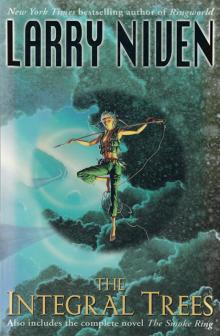 The Integral Trees - Omnibus
The Integral Trees - Omnibus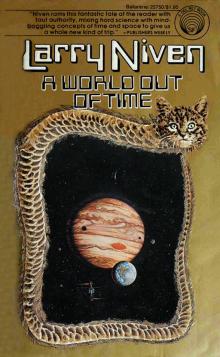 A World Out of Time
A World Out of Time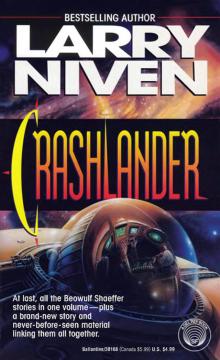 Crashlander
Crashlander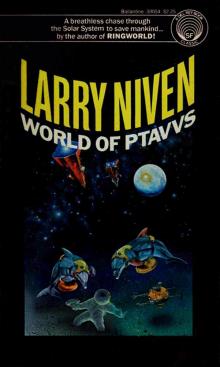 The World of Ptavvs
The World of Ptavvs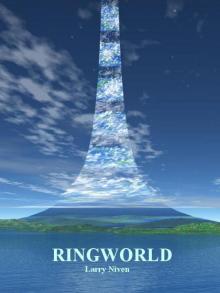 Ringworld
Ringworld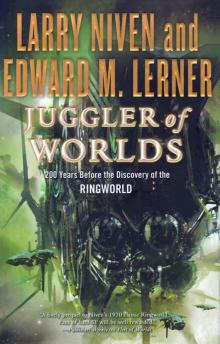 Juggler of Worlds
Juggler of Worlds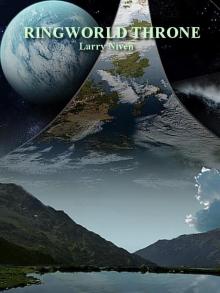 The Ringworld Throne
The Ringworld Throne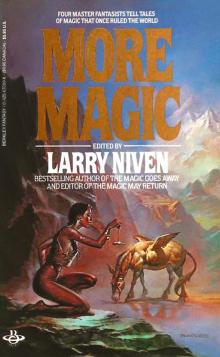 The Magic Goes Away Collection: The Magic Goes Away/The Magic May Return/More Magic
The Magic Goes Away Collection: The Magic Goes Away/The Magic May Return/More Magic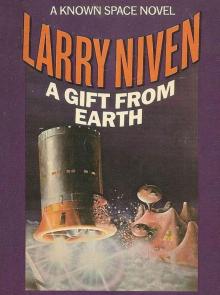 A Gift From Earth
A Gift From Earth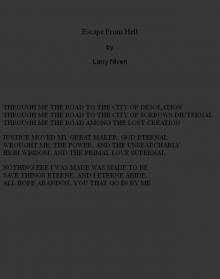 Escape From Hell
Escape From Hell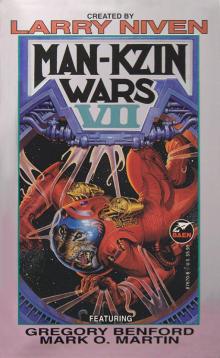 Larry Niven’s Man-Kzin Wars - VII
Larry Niven’s Man-Kzin Wars - VII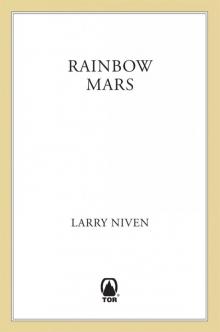 Rainbow Mars
Rainbow Mars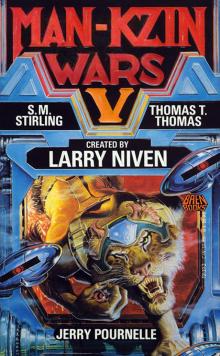 Larry Niven’s Man-Kzin Wars - V
Larry Niven’s Man-Kzin Wars - V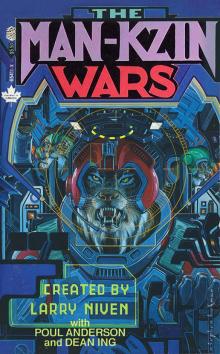 Larry Niven’s Man-Kzin Wars - I
Larry Niven’s Man-Kzin Wars - I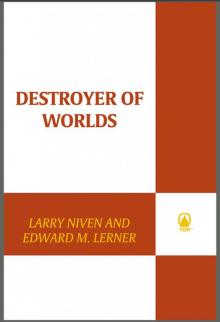 Destroyer of Worlds
Destroyer of Worlds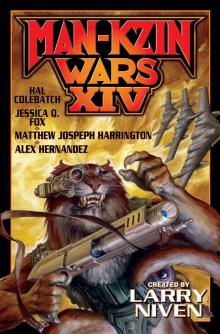 Man-Kzin Wars XIV
Man-Kzin Wars XIV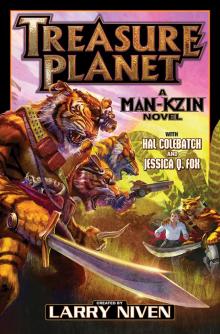 Treasure Planet
Treasure Planet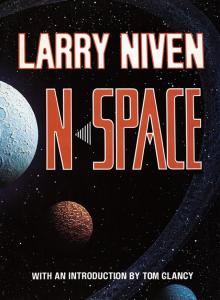 N-Space
N-Space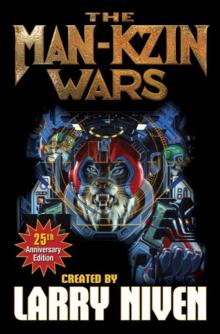 Man-Kzin Wars 25th Anniversary Edition
Man-Kzin Wars 25th Anniversary Edition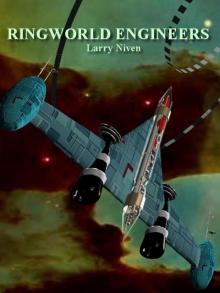 The Ringworld Engineers
The Ringworld Engineers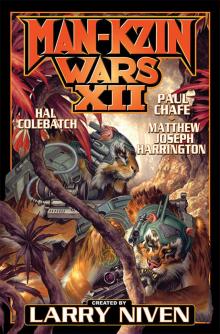 Larry Niven’s Man-Kzin Wars - XII
Larry Niven’s Man-Kzin Wars - XII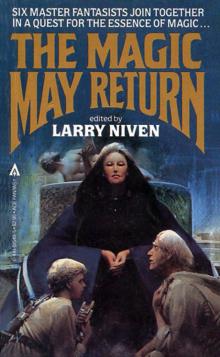 The Magic May Return
The Magic May Return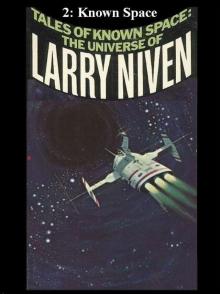 Tales of Known Space: The Universe of Larry Niven
Tales of Known Space: The Universe of Larry Niven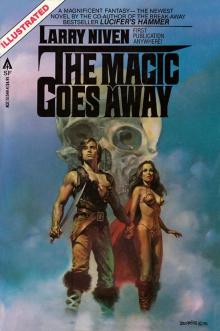 The Magic Goes Away
The Magic Goes Away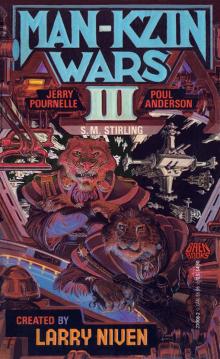 Larry Niven’s Man-Kzin Wars - III
Larry Niven’s Man-Kzin Wars - III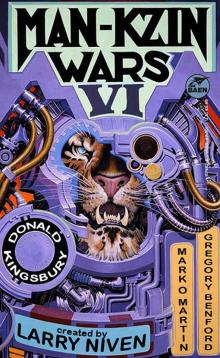 Larry Niven’s Man-Kzin Wars - VI
Larry Niven’s Man-Kzin Wars - VI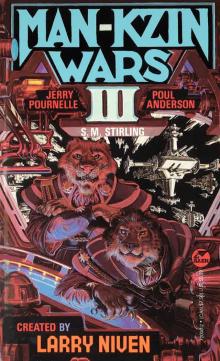 Man-Kzin Wars III
Man-Kzin Wars III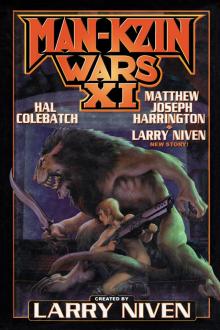 Larry Niven’s Man-Kzin Wars - XI
Larry Niven’s Man-Kzin Wars - XI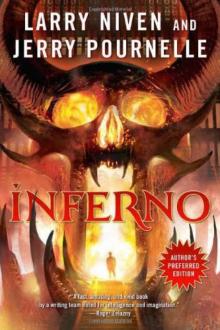 Inferno
Inferno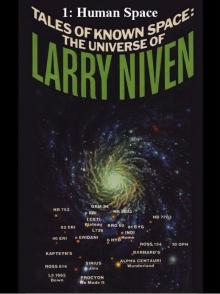 01-Human Space
01-Human Space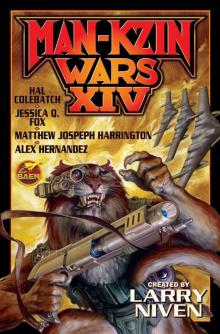 Larry Niven’s Man-Kzin Wars - XIV
Larry Niven’s Man-Kzin Wars - XIV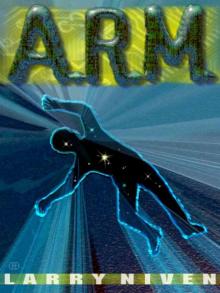 The Long Arm of Gil Hamilton
The Long Arm of Gil Hamilton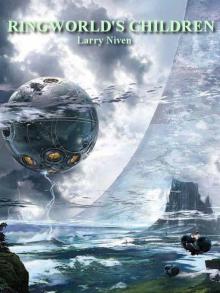 Ringworld's Children
Ringworld's Children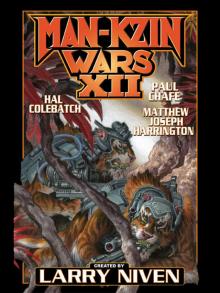 Man-Kzin Wars XII
Man-Kzin Wars XII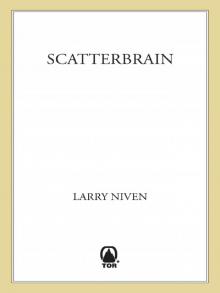 Scatterbrain
Scatterbrain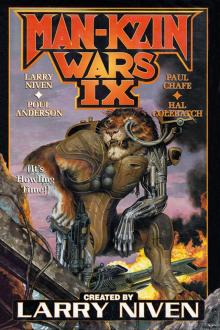 Man-Kzin Wars 9
Man-Kzin Wars 9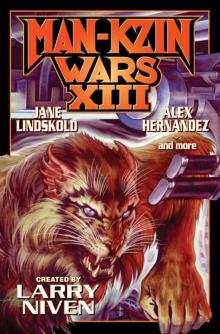 Man-Kzin Wars XIII
Man-Kzin Wars XIII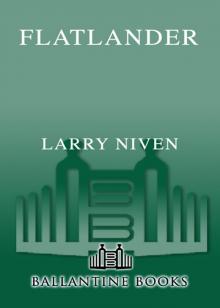 Flatlander
Flatlander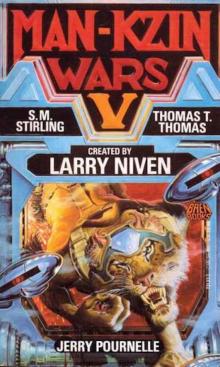 Man-Kzin Wars V
Man-Kzin Wars V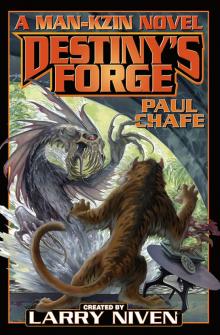 Destiny's Forge
Destiny's Forge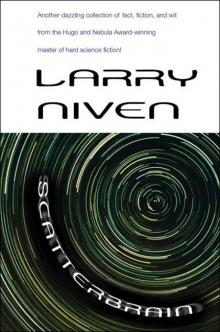 Scatterbrain (2003) SSC
Scatterbrain (2003) SSC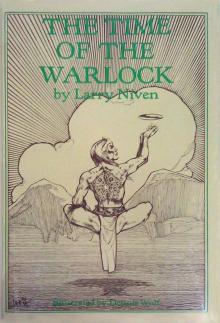 The Time of the Warlock
The Time of the Warlock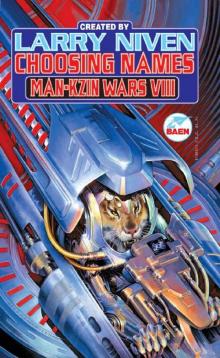 Choosing Names: Man-Kzin Wars VIII
Choosing Names: Man-Kzin Wars VIII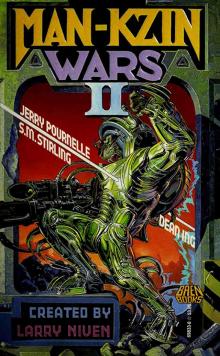 Larry Niven's Man-Kzin Wars II
Larry Niven's Man-Kzin Wars II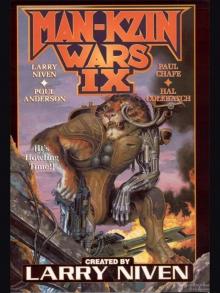 Man-Kzin Wars IX (Man-Kzin Wars Series Book 9)
Man-Kzin Wars IX (Man-Kzin Wars Series Book 9)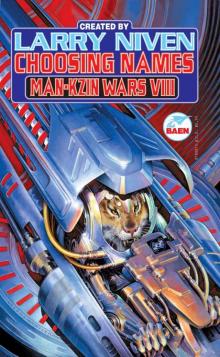 Choosing Names: Man-Kzin Wars VIII (Man-Kzin Wars Series Book 8)
Choosing Names: Man-Kzin Wars VIII (Man-Kzin Wars Series Book 8)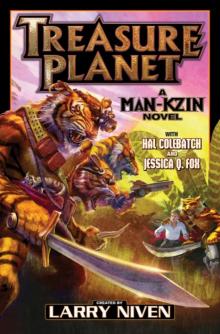 Treasure Planet - eARC
Treasure Planet - eARC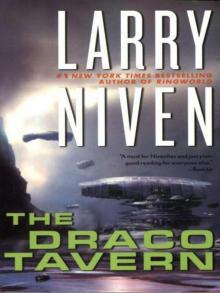 The Draco Tavern
The Draco Tavern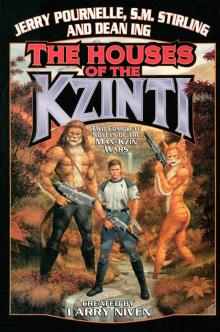 Larry Niven’s Man-Kzin Wars - The Houses of the Kzinti
Larry Niven’s Man-Kzin Wars - The Houses of the Kzinti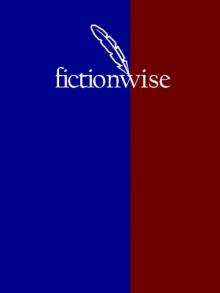 The Fourth Profession
The Fourth Profession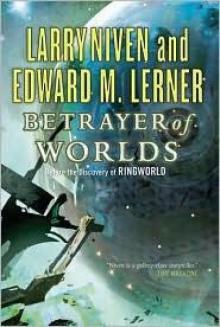 Betrayer of Worlds
Betrayer of Worlds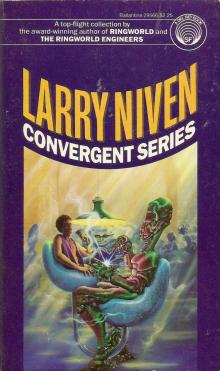 Convergent Series
Convergent Series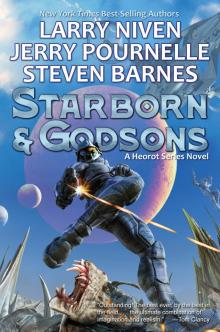 Starborn and Godsons
Starborn and Godsons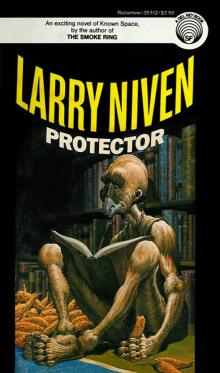 Protector
Protector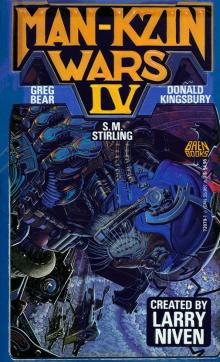 Larry Niven’s Man-Kzin Wars - IV
Larry Niven’s Man-Kzin Wars - IV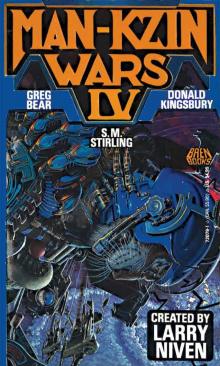 Man-Kzin Wars IV (Man-Kzin Wars Series Book 4)
Man-Kzin Wars IV (Man-Kzin Wars Series Book 4)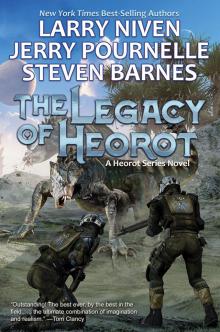 The Legacy of Heorot
The Legacy of Heorot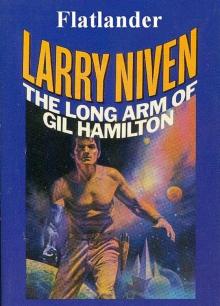 03-Flatlander
03-Flatlander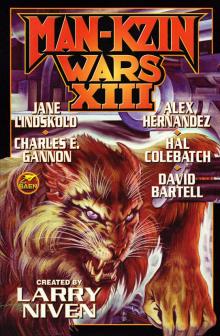 Larry Niven’s Man-Kzin Wars - XIII
Larry Niven’s Man-Kzin Wars - XIII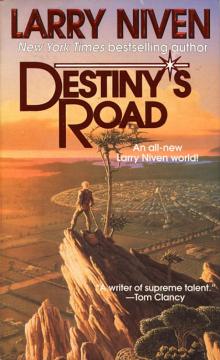 Destiny's Road
Destiny's Road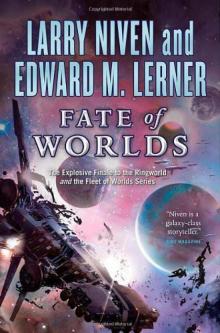 Fate of Worlds
Fate of Worlds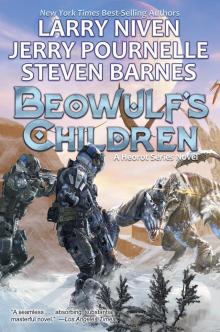 Beowulf's Children
Beowulf's Children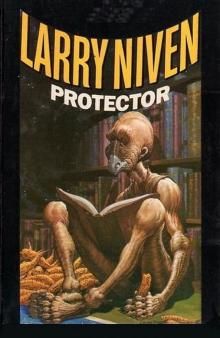 04-Protector
04-Protector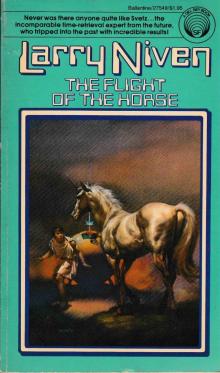 The Flight of the Horse
The Flight of the Horse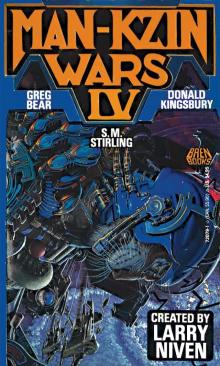 Man-Kzin Wars IV
Man-Kzin Wars IV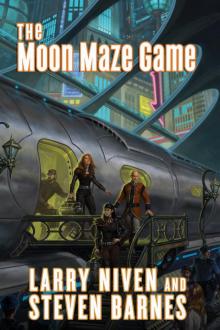 The Moon Maze Game dp-4
The Moon Maze Game dp-4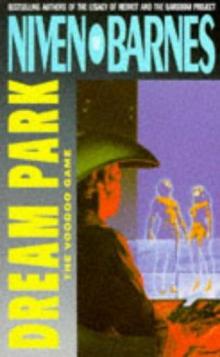 The California Voodoo Game dp-3
The California Voodoo Game dp-3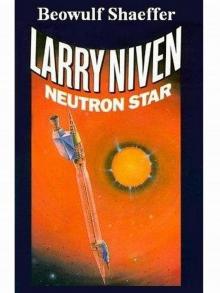 07-Beowulf Shaeffer
07-Beowulf Shaeffer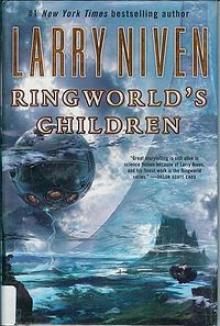 Ringworld's Children r-4
Ringworld's Children r-4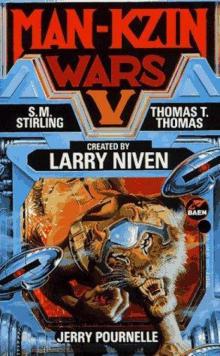 The Man-Kzin Wars 05
The Man-Kzin Wars 05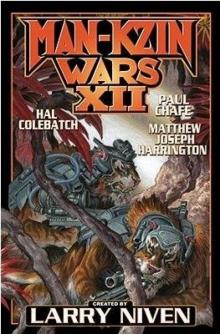 The Man-Kzin Wars 12
The Man-Kzin Wars 12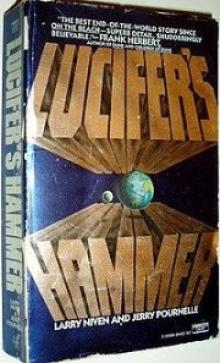 Lucifer's Hammer
Lucifer's Hammer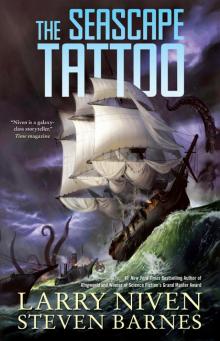 The Seascape Tattoo
The Seascape Tattoo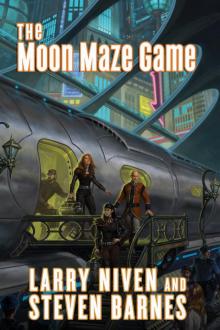 The Moon Maze Game
The Moon Maze Game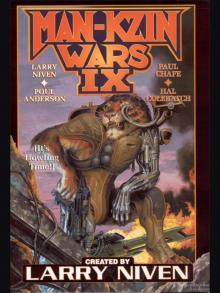 Man-Kzin Wars IX
Man-Kzin Wars IX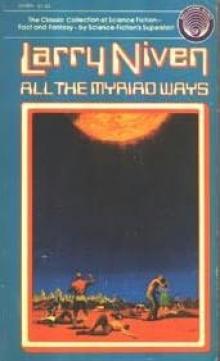 All The Myriad Ways
All The Myriad Ways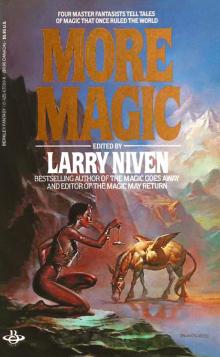 More Magic
More Magic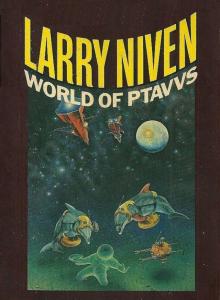 02-World of Ptavvs
02-World of Ptavvs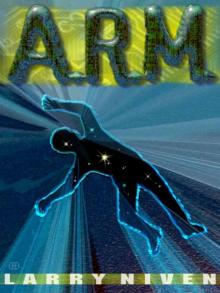 ARM
ARM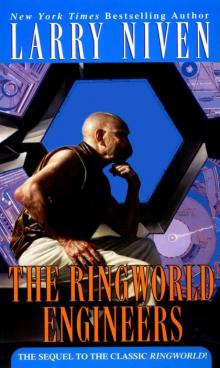 The Ringworld Engineers (ringworld)
The Ringworld Engineers (ringworld)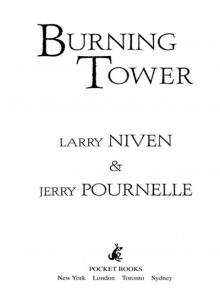 Burning Tower
Burning Tower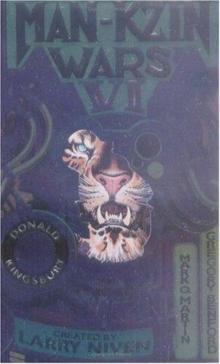 The Man-Kzin Wars 06
The Man-Kzin Wars 06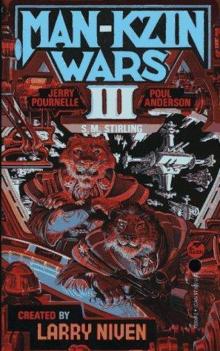 The Man-Kzin Wars 03
The Man-Kzin Wars 03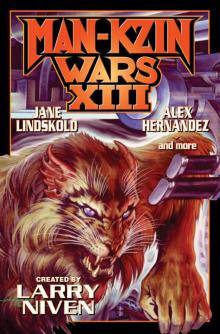 Man-Kzin Wars XIII-ARC
Man-Kzin Wars XIII-ARC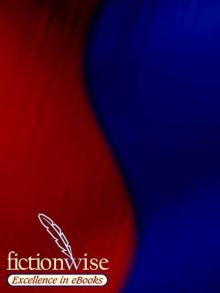 The Hole Man
The Hole Man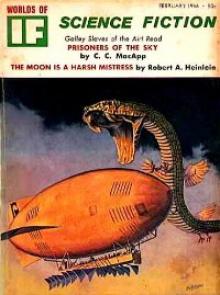 The Warriors mw-1
The Warriors mw-1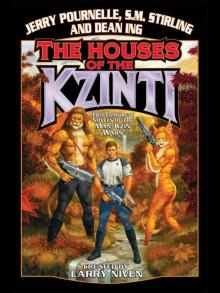 The Houses of the Kzinti
The Houses of the Kzinti The Man-Kzin Wars 07
The Man-Kzin Wars 07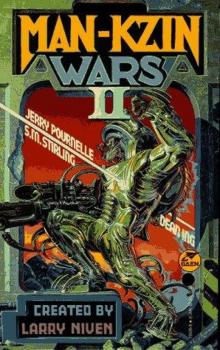 The Man-Kzin Wars 02
The Man-Kzin Wars 02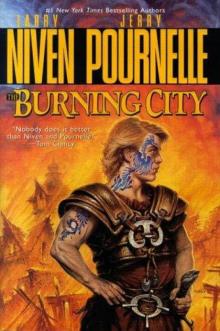 The Burning City
The Burning City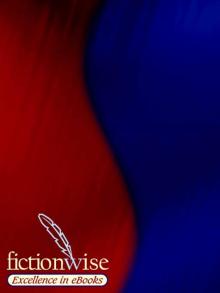 At the Core
At the Core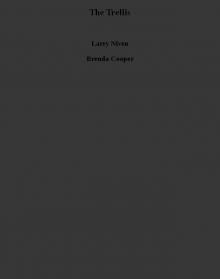 The Trellis
The Trellis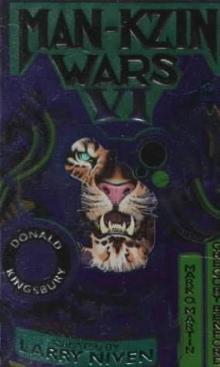 The Man-Kzin Wars 01 mw-1
The Man-Kzin Wars 01 mw-1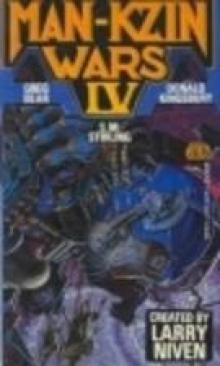 The Man-Kzin Wars 04
The Man-Kzin Wars 04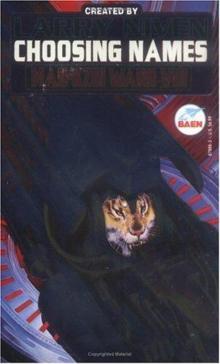 The Man-Kzin Wars 08 - Choosing Names
The Man-Kzin Wars 08 - Choosing Names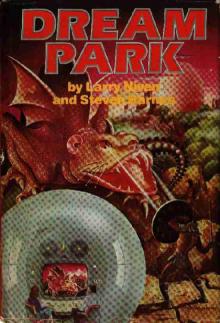 Dream Park
Dream Park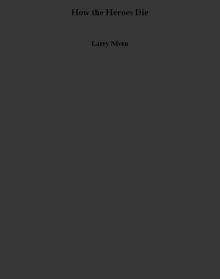 How the Heroes Die
How the Heroes Die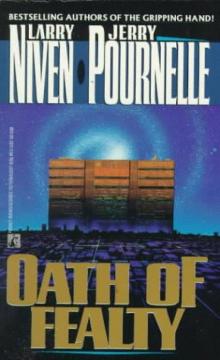 Oath of Fealty
Oath of Fealty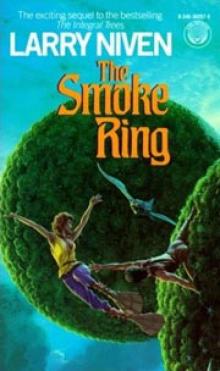 The Smoke Ring t-2
The Smoke Ring t-2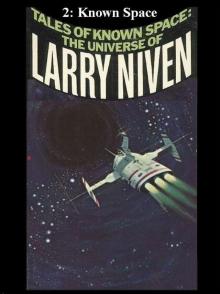 06-Known Space
06-Known Space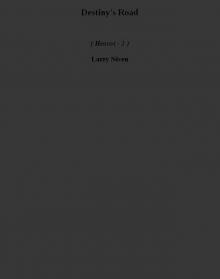 Destiny's Road h-3
Destiny's Road h-3 Flash crowd
Flash crowd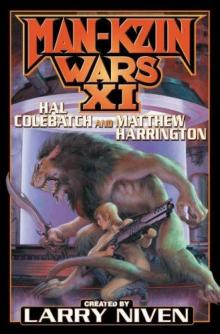 The Man-Kzin Wars 11
The Man-Kzin Wars 11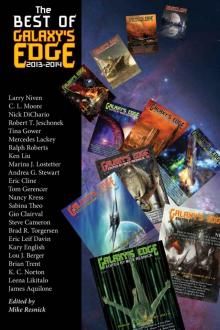 The Best of Galaxy’s Edge 2013-2014
The Best of Galaxy’s Edge 2013-2014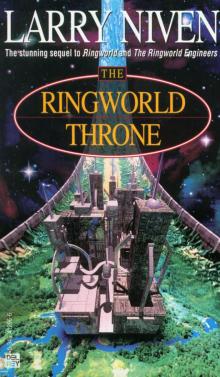 The Ringworld Throne r-3
The Ringworld Throne r-3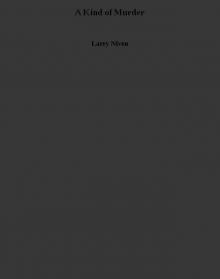 A Kind of Murder
A Kind of Murder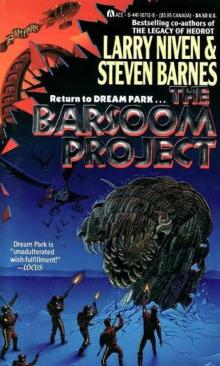 The Barsoom Project dp-2
The Barsoom Project dp-2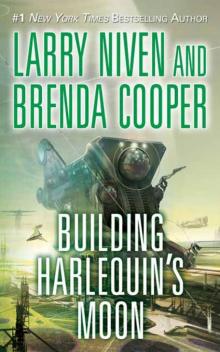 Building Harlequin’s Moon
Building Harlequin’s Moon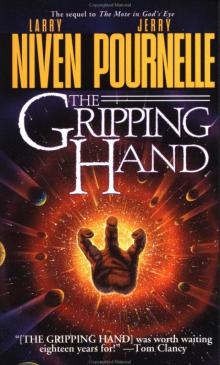 The Gripping Hand
The Gripping Hand The Leagacy of Heorot
The Leagacy of Heorot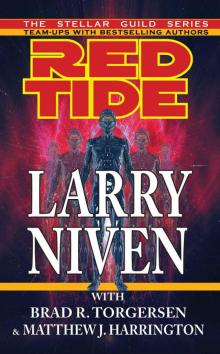 Red Tide
Red Tide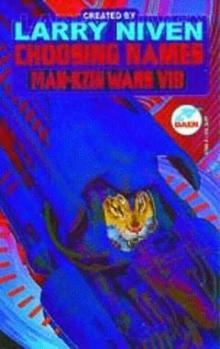 Choosing Names mw-8
Choosing Names mw-8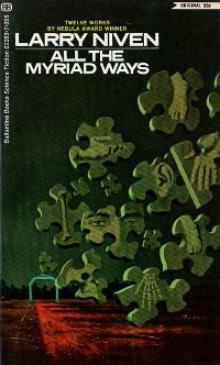 Inconstant Moon
Inconstant Moon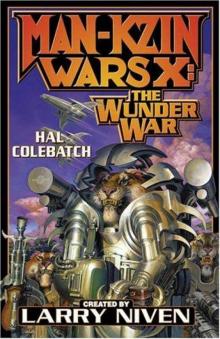 The Man-Kzin Wars 10 - The Wunder War
The Man-Kzin Wars 10 - The Wunder War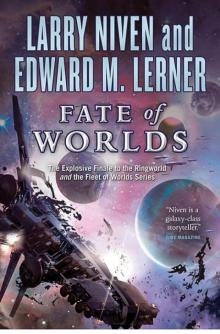 Fate of Worlds: Return From the Ringworld
Fate of Worlds: Return From the Ringworld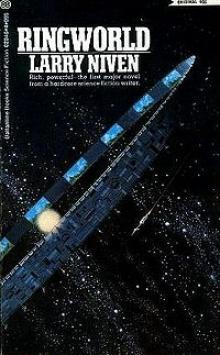 Ringworld r-1
Ringworld r-1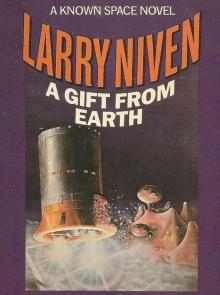 05-A Gift From Earth
05-A Gift From Earth The Integral Trees t-1
The Integral Trees t-1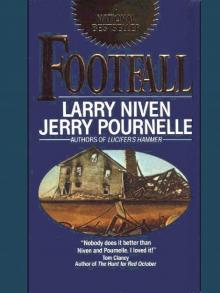 Footfall
Footfall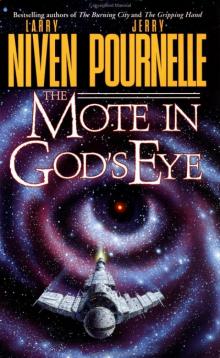 The Mote In God's Eye
The Mote In God's Eye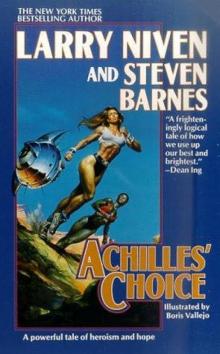 Achilles choice
Achilles choice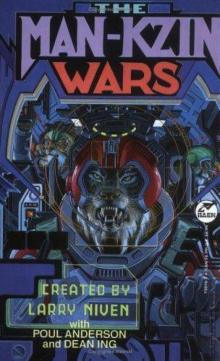 The Man-Kzin Wars 01
The Man-Kzin Wars 01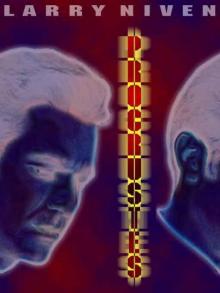 Procrustes
Procrustes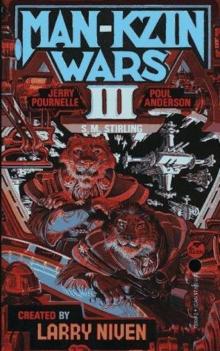 The Man-Kzin Wars 03 mw-3
The Man-Kzin Wars 03 mw-3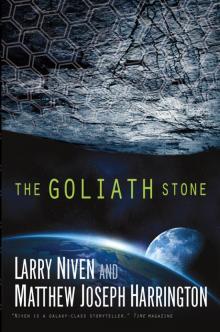 The Goliath Stone
The Goliath Stone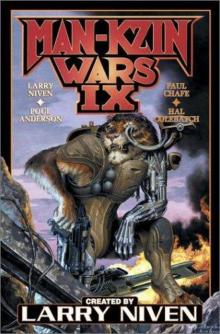 The Man-Kzin Wars 09
The Man-Kzin Wars 09